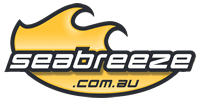

I saw this on a another forum
sandpyper.blogspot.com/2016/07/sandpipers-final-voyage.html?showComment=1470470917951
Regards Don
It shows the importance of a grab bag and travel insurance. Not sure about the fire extinguisher, sounds like the units that are banned in Australia but Americans still use.
Ive seen a brand new blast hole drill rig that a small oil line fractured and strayed oil directly onto the turbo and she went up in flames real quick. Turbos put out a lot of heat. I personally would never fit one into a boat.
To add to that a turbo would not loose its heat from the fire extinguisher. Might put a fire out but the turbos heat would still be retained
Ready to reignite
It shows the importance of a grab bag and travel insurance. Not sure about the fire extinguisher, sounds like the units that are banned in Australia but Americans still use.
Check the type of extinguisher on your boat. I think you will find it is the same type. Pretty standard.
Thanks for sharing. Definitely some good lessons to be learned.
In addition to readily accessible fire extinguishers, having a reliable seawater pump is a good precaution. Water can suppress pretty much any fire except an electrical fire.
Long story, but recently my genset (fortunately on land, not on board) caught fire and even with 2m flames I was able to put it out with my garden hose. It took a LOT of water though - considerably more than I could have bucketed in the same amount of time.
BC fire extinguishers are the white ones common in the US and use sodium or potassium bicarbonate. The most common in Aus use monoammonium phosphate and are the red extinguishers with white stripe (ABE). Aus also has BC type (rated BE here) which are also red with white stripe, but not that common.
ABE (ABC in US) are better for wood, paper etc as the agent melts and helps smother the source, but they are corrosive and harder to clean up.
Both are dry chemical and spray a lot of crap about. I don't know if one would spray about more than the other.
Halon production has been banned since the 90's and it was used in BCF (yellow or green) fire extinguishers. these are banned in Aus but aircraft have an exemption as they are non-corrosive (especially for aluminium) and very effective. Halotron is a recent alternative now approved for aircraft, I think they are plain red.
If using a BCF in confined spaces, we are taught to always don breathing apparatus (face mask connected to fixed or portable oxy cylinder, or chemical generated hood).
Thanks for sharing. Definitely some good lessons to be learned.
In addition to readily accessible fire extinguishers, having a reliable seawater pump is a good precaution. Water can suppress pretty much any fire except an electrical fire.
Long story, but recently my genset (fortunately on land, not on board) caught fire and even with 2m flames I was able to put it out with my garden hose. It took a LOT of water though - considerably more than I could have bucketed in the same amount of time.
just be careful with lithium batteries and water in a fire
Scary. Recently had an electrical fire which was scary. Escalated fast and pulled out the Abe extinguisher which killed it quick. Made a bloody mess though. Powder everywhere. Good call having some different types of extinguishers , hoses handy and grab bags. Gotta do drills.
Dunno about water for everything. If you put it on a petrol fire it ignites.
While it's true that water cannot smother a petrol fire, like a powder-type fire extinguisher, water will indeed put out a petrol or diesel fire.
It does so by removing the heat from the fire, not by smothering. The trick is to not apply so much water as to create a river for the fuel to float away and spread!
A water-based fire extinguisher is an option when a water hose is not. It's likely Sandpiper could have cooled down her diesel engine and suppressed the fire with just water.

Note, water is no good for electrical fires because it conducts electricity.